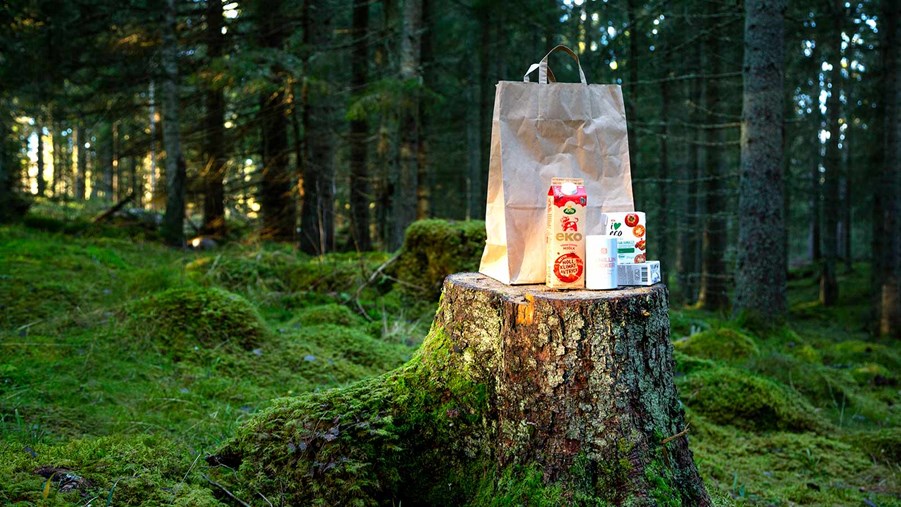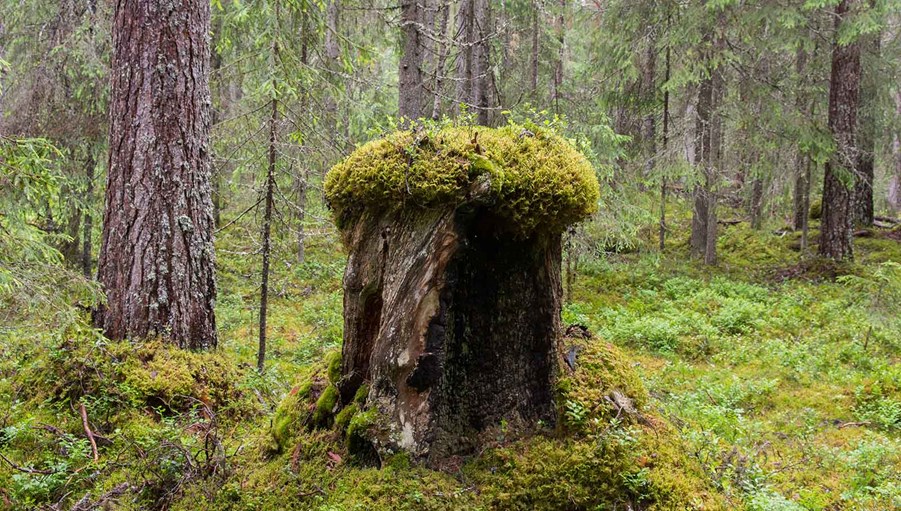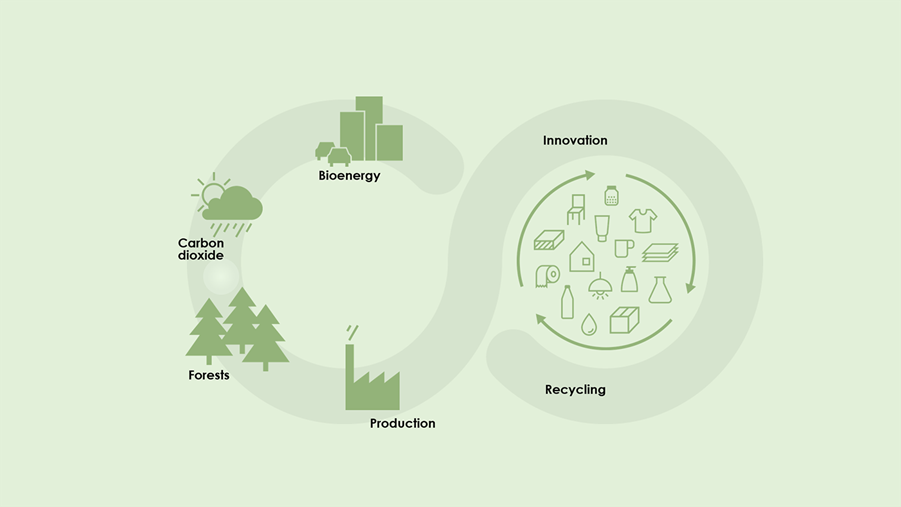
Forests create climate benefit with carbon storage in growing trees and by replacing fossil-based products and raw materials with renewable, fossil-free forest raw materials. In this way, forests and forest products contribute to the green transformation of society as a whole.
The climate effect of the forestry industry is calculated by adding carbon sequestration effects and reductions in fossil emissions that occur when forest products replace fossil-based alternatives such as cement, steel, plastic and oil. We of course deduct from that number the fossil emissions that arise in our value chain, including from logging machines, the transport of raw materials and finished products, and industrial processes.
Forest products and growing forests: maximising climate benefit
In 2020, the Swedish forest industry had a total and positive climate effect of 93 million tonnes of carbon dioxide equivalents (CO2e). This is more than twice as much as Sweden’s reported total emissions for the same year. Here’s how we arrived at the figure:
- An extraordinary number of everyday products come from forests – everything from nappies and packaging to our homes and energy that heats them. The Swedish forest industry annually refines approximately 70 million cubic metres of wood into wood products, fibre-based products and renewable energy. This reduces the use of fossil fuels through substitution by 52 million tonnes of carbon dioxide equivalents a year (CO2e/year).
- In addition, carbon storage in Swedish forests is continuously increasing, mainly by increasing in the number of growing trees. This corresponds to 46 million tonnes of CO2e/year.
- The Swedish forest industry’s fossil emissions correspond to 4 million tonnes CO2e/year.
By using forests for products and at the same time actively managing them, the Swedish forest industry provides a climate benefit that exceeds Sweden’s total emissions.

Reducing the extraction of wood to increase carbon sink capacity provides only a short-term climate benefit. Over time, forests’ ability to absorb carbon dioxide decreases, while reducing wood extraction also reduces the number of fossil-free and renewable forest products available to society.
Photo: Kerstin Jonsson
Growing for the climate
In the past 100 years, forest growth rates and timber supply in Sweden have doubled. In the mid-1920s, the total timber supply, including areas now protected, amounted to 1,790 million m3sk, and today amounts to 3,596 million m3sk.* Today, the timber supply from Swedish forests is growing by approximately 120 million cubic metres of stem volume a year.
Through photosynthesis, trees capture carbon, in the form of carbon dioxide, from the air and at the same time release oxygen. Carbon is bound into the green parts of trees and stored in the wood, i.e., trunks, branches, twigs and roots. As forests age, their ability to absorb carbon dioxide decreases. This is because trees die, burn, or are attacked by pests. When forests reach their maximum supply of timber, they become a climate-neutral carbon store, i.e., they emit as much carbon through the breakdown of dead trees as they sequester with growing trees. Therefore, growth is a fundamental aspect of the role of forests and the forest industry for the climate.
When dead wood is broken down by organisms that live on the nutrients and energy stored in biomass, carbon is released into the air. The rate of decomposition varies depending on the size of the wood – thin twigs break down faster than thick branches, for example. But how long this takes also depends on temperature and access to water and oxygen.
Fossil-free and renewable products for the climate
The Swedish forestry industry combines profitability, sustainability, and climate benefits. The market for forest products and the sector’s private actors have had – and continue to have – a key role in doubling the carbon sink capacity of forests and at the same time reducing the use of fossil fuels at scale. Forest products and materials made from wood enable the phase out of fossil fuels and the simultaneously sequestration of carbon.
By replacing fossil products and materials with fossil-free and renewable ones, we accelerate the development of the circular economy and protect the climate. Did you know, for example, that long-lived products such as furniture and wooden houses store carbon for more than 100 years, (a four-story wooden house stores 150 tonnes of CO2e) or that wood fibre can be recycled up to 7 times?


